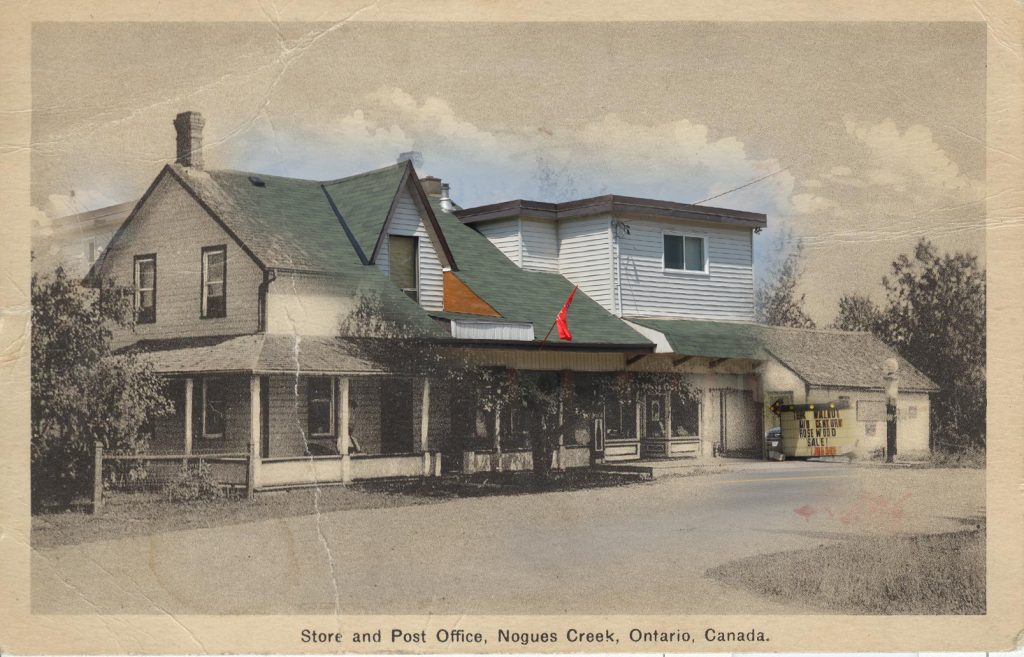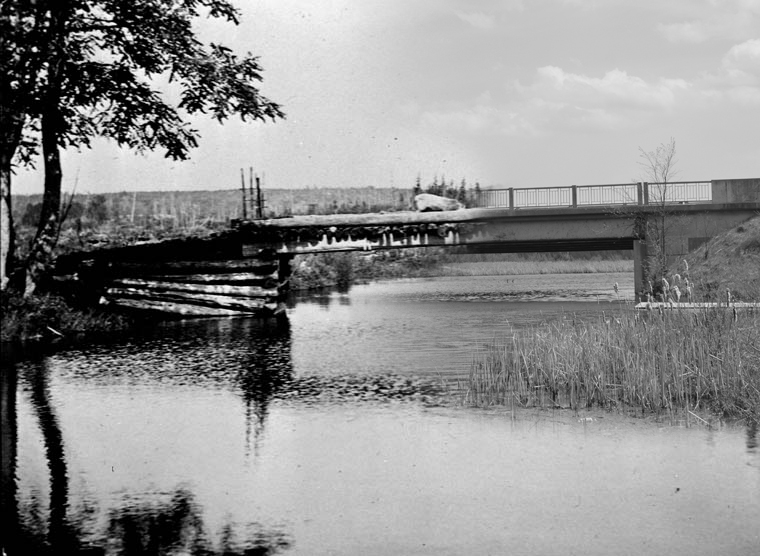Peter Nogee’s Creek
Winding through a rocky valley from its source in a shallow lake to Pigeon Lake, Nogies Creek was named for Peter Nogee or Snowstorm. He was a memorable Anishinaabe or Ojibwa character from neighbouring Curve Lake.
Early nineteenth century Anishinaabe lived along the waterway, gathering wild rice, harvesting plants, hunting, trapping and fishing. The village on Chemong Lake (later named Curve Lake) overlooked rich beds of wild rice. Rice was also plentiful on Pigeon Lake, which was connected to creeks and wetlands yielding game and fur.
Chief Nogee was banished after the Indian Agent accused him of embezzling from his community. Until his death he resided in a cabin on the creek bearing his name. One lady remembered him as “a strange, eccentric, merry old fellow, with a skin like red mahogany, and a wiry sinewy frame, that looked as if it could bid defiance to every change of temperature.”

The Post Office and General Store at Nogies Creek (Original postcard: date unknown combined with modern photograph: 2017)
In the second half the nineteenth century, Nogies Creek was the outlet for sawlogs from the surrounding uplands, largely serving Mossom Boyd’s Bobcaygeon mill. Alongside the forest industries, a hardscrabble farming community grew despite the terrain. Families got by on isolated pockets of workable soil, scattered among the otherwise stony tracts.

Bridge over Nogies Creek at the head of Pigeon Lake (Original photograph: 1904 combined with modern photograph: 2017)
From the nineteenth century on, Nogies Creek attracted hunters and sportsmen from Bobcaygeon and locations further afield. With the advent of motor cars and personal watercraft, it became a quiet cottage community. Today, ATVs and outdoor enthusiasts carry on the Anishinaabe tradition of hunting along this pretty, stony creek.
Modern photography and image combining: Sharon Johnson.
Copyright: Maryboro Lodge.

